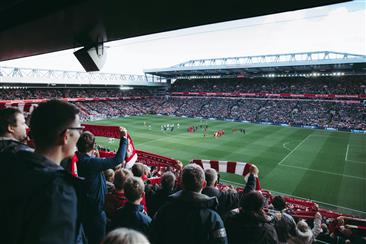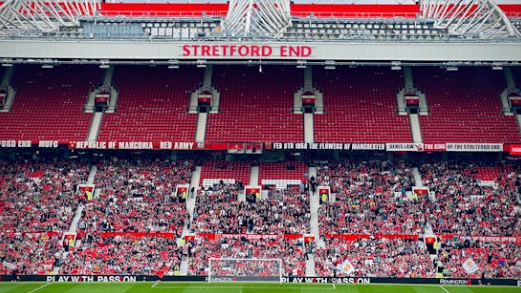
The roar of the crowd, the crunch of nachos, the heart-pounding suspense of a close game—these things haven’t changed. But the people experiencing them have. As Gen Z comes of age, they’re not just attending games and following teams. They’re reshaping what it means to be a sports fan.
Born between the late 1990s and early 2010s, Gen Z is the first generation raised entirely in the digital age. They scroll faster, multitask better, and question harder. Their relationship with sports is complex—less tribal, more fluid. And for teams, leagues, and broadcasters, keeping up with this generation isn’t a matter of tweaking a few hashtags. It means rethinking the entire playbook.
Not Just Watching—Participating
Gen Z doesn’t just watch sports. They remix it, meme it, debate it in comment sections, and turn it into content of their own. Where previous generations might have been content to catch the highlights on ESPN, Gen Z wants to clip their favorite moments, add music, and post it before the game is even over.
This participatory mindset has transformed how sports content is produced and consumed. TikTok and Instagram Reels are no longer fringe platforms—they’re central arenas where fan culture lives. Teams now assign full-time staff to produce short-form content that feels native to these platforms, not like a watered-down version of a press release.
The goal isn’t to push information. It’s to create moments worth sharing.
Loyalty Looks Different Now
Older generations often picked a team and stuck with it—win or lose, season after season. Gen Z is less likely to inherit fandom. They’re drawn to players, vibes, and stories. They’ll follow a basketball player from high school mixtapes to their rookie year, or root for a soccer club halfway across the globe because of a compelling docuseries or a viral tweet.
This doesn’t mean Gen Z lacks loyalty—it just means it works differently. They bond over personality as much as performance. They want to know what athletes are like off the field: their fashion, playlists, politics, and pets. That human layer matters as much as stat lines.
Leagues that once discouraged individuality are slowly embracing it. The NBA has leaned into this more than most, allowing player expression to become part of the product itself. Walk-in tunnel fits now get almost as much attention as pre-game warmups.

Less Patience, More Punch
The traditional three-hour broadcast is losing its grip. Gen Z wants the game, but they want it on their terms. Maybe that’s a 15-second highlight, a 10-minute YouTube recap, or just the best moments served on a meme page.
It’s not that they don’t care about sports—they just don’t have time for the filler. Time is currency, and attention spans are short. This has forced networks and teams to rethink how they present games. Some have experimented with alternate broadcasts—more casual, less formal, often with creators or influencers co-hosting alongside traditional commentators.
In some cases, Gen Z is more interested in watching other people watch the game—hence the rise of reaction videos, Twitch streams, and watch-alongs. This isn’t just second-screen behavior—it’s becoming the main event.
Social First, Always
For Gen Z, social media isn’t a second screen—it’s the first one. It’s where they hear about trades, react to upsets, and connect with fellow fans. Twitter (now X), Reddit, Discord, Instagram, and TikTok aren’t just platforms—they’re arenas.
This means the tone of sports communication has changed. Brands can’t just post final scores with a generic caption anymore. Fans expect wit, attitude, and even a bit of edge. The line between the team account and a meme account is getting blurrier—and that’s by design.
Some of the most successful team social accounts don’t shy away from humor or self-deprecation. They understand that Gen Z doesn’t want perfection; they want personality.
Values on the Field
Gen Z isn’t just watching what athletes do—they’re watching what they stand for. This generation is more politically aware and socially engaged than those before them, and they expect the same from their heroes.
Athletes who speak out on issues, take a stand, or even just act with transparency and empathy often find greater support. Silence can feel like avoidance. Teams and leagues that pretend sports and politics don’t mix often find themselves out of step.
Of course, not every young fan agrees on every issue. But the overall expectation is clear: sports figures are public figures, and Gen Z holds them to account.
E-Sports, Fantasy, and the Blurred Line of Fandom
For many in Gen Z, fandom includes eSports and gaming as much as traditional sports. Titles like FIFA, NBA 2K, and Madden aren’t just games—they’re cultural bridges. A young fan might learn about a team or player through a video game long before they see them play live.
Fantasy sports and betting platforms have also grown more social and competitive. It’s less about the money and more about the bragging rights, the trash talk, and the group chats. Gen Z isn’t looking for passive entertainment—they want an active role.
Even traditional teams are noticing. Some now partner with streamers or host gaming tournaments in-stadium. It’s part of meeting fans where they already are.
The Future of the Stadium Experience
All of this digital engagement raises an important question: what about the live game? Will Gen Z keep showing up in person?
The answer seems to be yes—if the experience is right.
For younger fans, going to a game has to be more than just watching the score unfold. It has to be social, shareable, and sensory. Stadiums are evolving to reflect that, with better food, curated music, dedicated selfie spots, and tech that lets fans stay connected even while seated.
Wi-Fi isn’t a luxury anymore. It’s as essential as hot dogs and cold drinks.
Teams are also experimenting with themed nights, crossover events, and even collaborations with fashion or streetwear brands—anything to make the in-person experience feel current.

Final Whistle
Gen Z hasn’t fallen out of love with sports—they’ve just redefined the relationship. They want transparency, personality, action, and access. They don’t follow rules just because that’s how it’s always been done. They curate their fandom the way they curate their playlists: freely, frequently, and with flair.
For leagues and franchises, this is both a challenge and an opportunity. It’s not about chasing trends—it’s about listening closely, showing up authentically, and being willing to change. Because if there’s one thing this generation respects, it’s effort that feels real.
The sports world isn’t being left behind. It’s being reimagined—one highlight reel, one viral moment, one real connection at a time.






